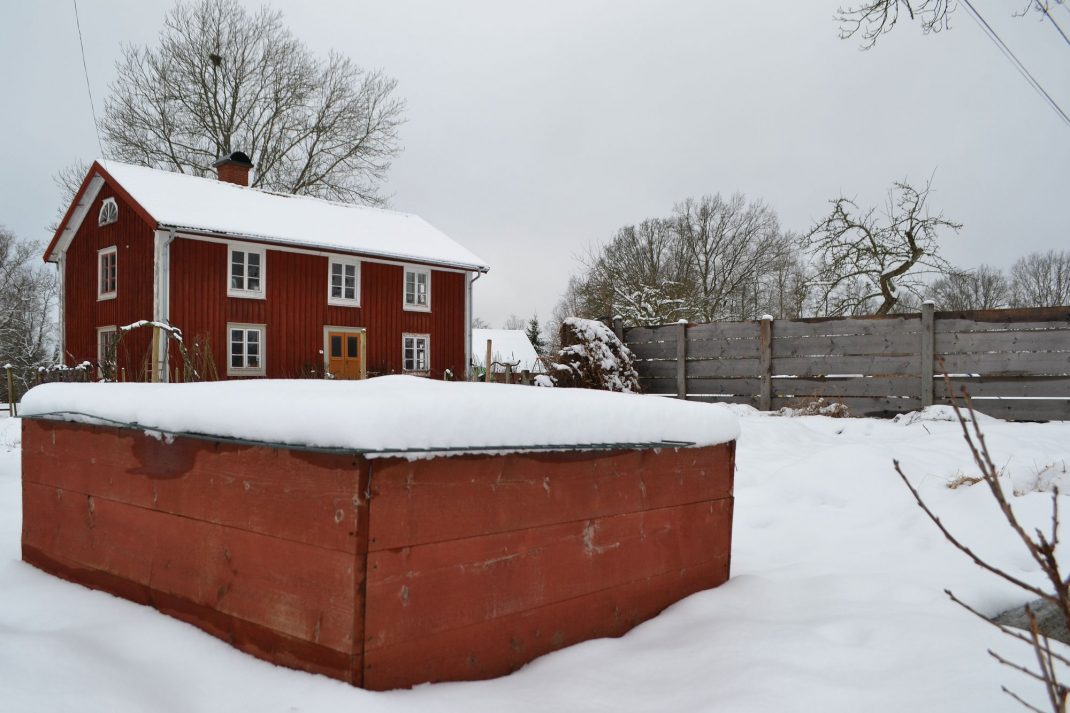Sowing seeds in winter
Cold and snowy? No problem! You can keep sowing seeds in winter with these helpful tips.

One of my raised beds covered with snow.
A few of you might already be experiencing the first snow, and I think it will come here soon too. I can't wait! I actually love the challenge of growing vegetables in winter. Everything seems to be possible and impossible at the very same time.
When I write about how I sow and harvest vegetables in winter, I always get comments about how it's simply not possible because "there's snow on the ground!", followed by grinning emojis. Readers from all over the world seem to share the sentiment that you simply can't sow seeds in winter.
But you are wrong!
You can definitely start sowing seeds in winter. The snow is not a problem. Plenty of us do it, experimenting with different methods to make it work. A lot of you might not want to grow at this time of the year though. But will and ability are two different things after all. Today, I would like to give anyone who is interested my best tips for sowing seeds in winter!
Preparation is key!
You need to prepare your beds if you want to be able to start sowing seeds in winter. But this process actually doesn't have to be too hard or time consuming.
Most people start their growing season in spring. That's when most of us go out into the sunshine and start preparing our beds, sowing seeds for a summer harvest. But you can do it another way. Start preparing your growing spaces already in fall, before the snow falls. Doing this means that you can start sowing seeds in winter too. Wintersowing leafy greens will give you a nice early harvest, many weeks earlier than expected. This actually works if you live far north too. I understand if you want to take it easy and grow your vegetables the regular way. But for those of you who want to go big and get the most out of your vegetable patch, I think you should give sowing seeds in winter a try!
Read more about growing vegetables in winter
What you want to do now is to prepare growing spaces where you can sow new seeds despite the snow. My recommendation is to build tall raised beds! Gather a few pallet collars, and stack three of them. Add old plant material to the bed and put some soil on top. Get a lid. And that's it, that's our first bed! Put it somewhere convenient, make sure that it's easy to get to the bed despite the snow. Why not close to your house, by a path or next to an outhouse? I broadcast sow leafy greens in some of these beds, and can start harvesting them already in April.
Watch videos about wintersowing on my YouTube channel
Use your greenhouse
Last but not least, don't forget about greenhouses! There are many different types of greenhouses, both polytunnels and regular glass greenhouses. Many people seem to use them as a storage space for their lawn mowers and outdoor furniture in winter though. It's crazy! Start fixing them up instead. Clean them out, dig down some compost, rake the soil and prepare it for new sowings (if you don't already have a batch of leafy greens growing there of course.) Sow as much as you can in winter, and you will have enough food to last all spring. I harvest vegetables in my polytunnel all winter and spring, simply by sowing new seeds even when it's cold outside.
If you want to read and see more from my garden, check out Sara's Kitchen Garden here:
Sara's Kitchen Garden at Facebook
Facebook group: The Kitchen Garden - Worldwide
Sara's Kitchen Garden on YouTube
Letter from the garden - newsletter from Sara's Kitchen Garden
I wanted to write this post to inspire anyone who might be interested in growing vegetables in winter too. But I absolutely understand if you don't want to though, I understand if spring and summer is enough for you. At least now you know that it's possible to sow seeds in winter too! Anything is possible, as long as we know how to do it.
/Sara Bäckmo



Leave a Reply
You must be logged in to post a comment.